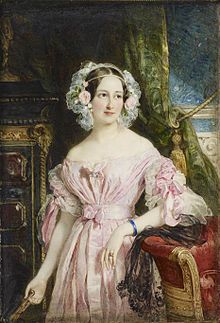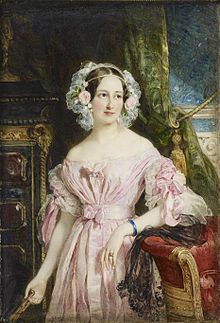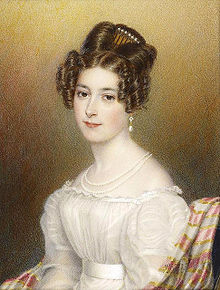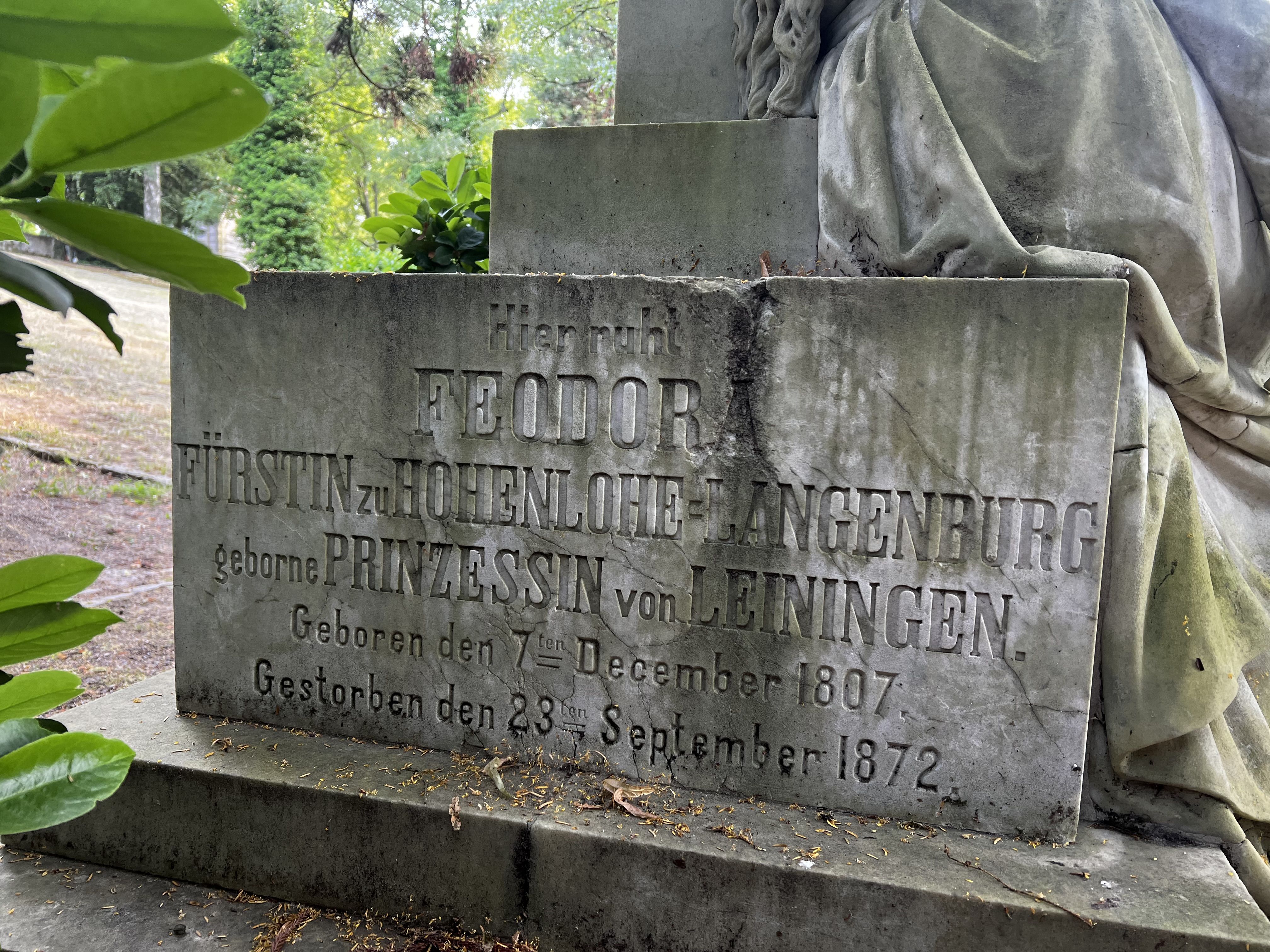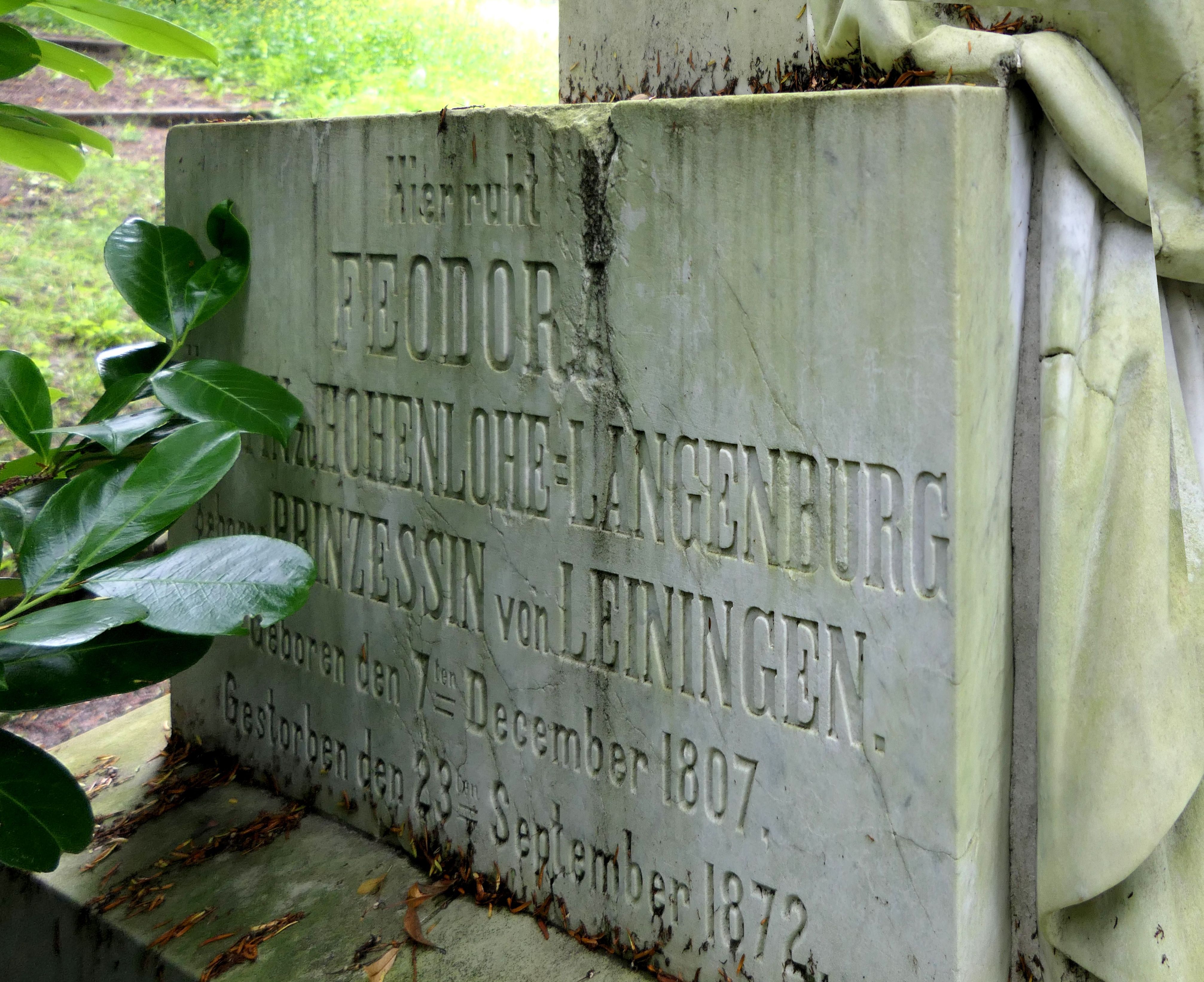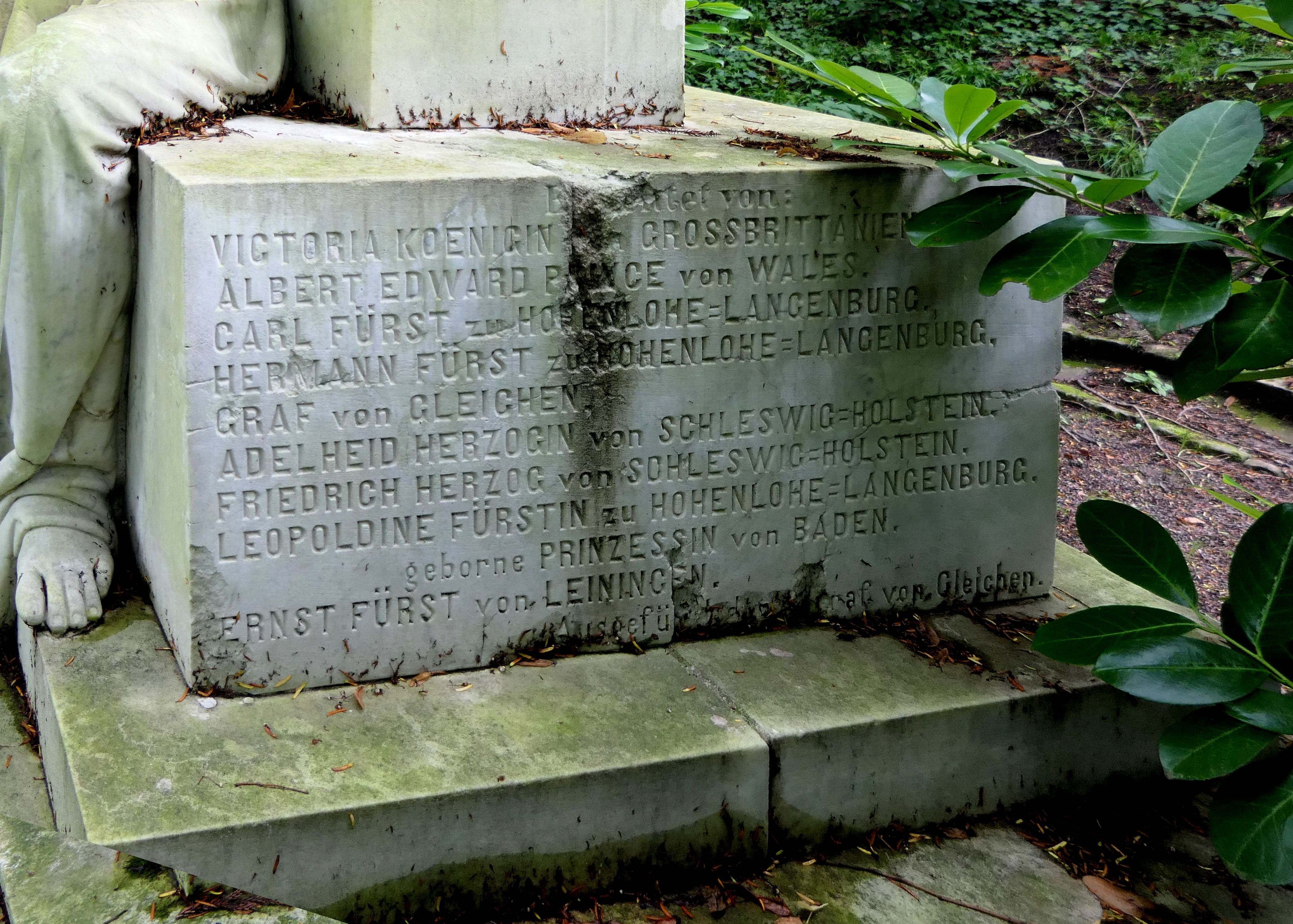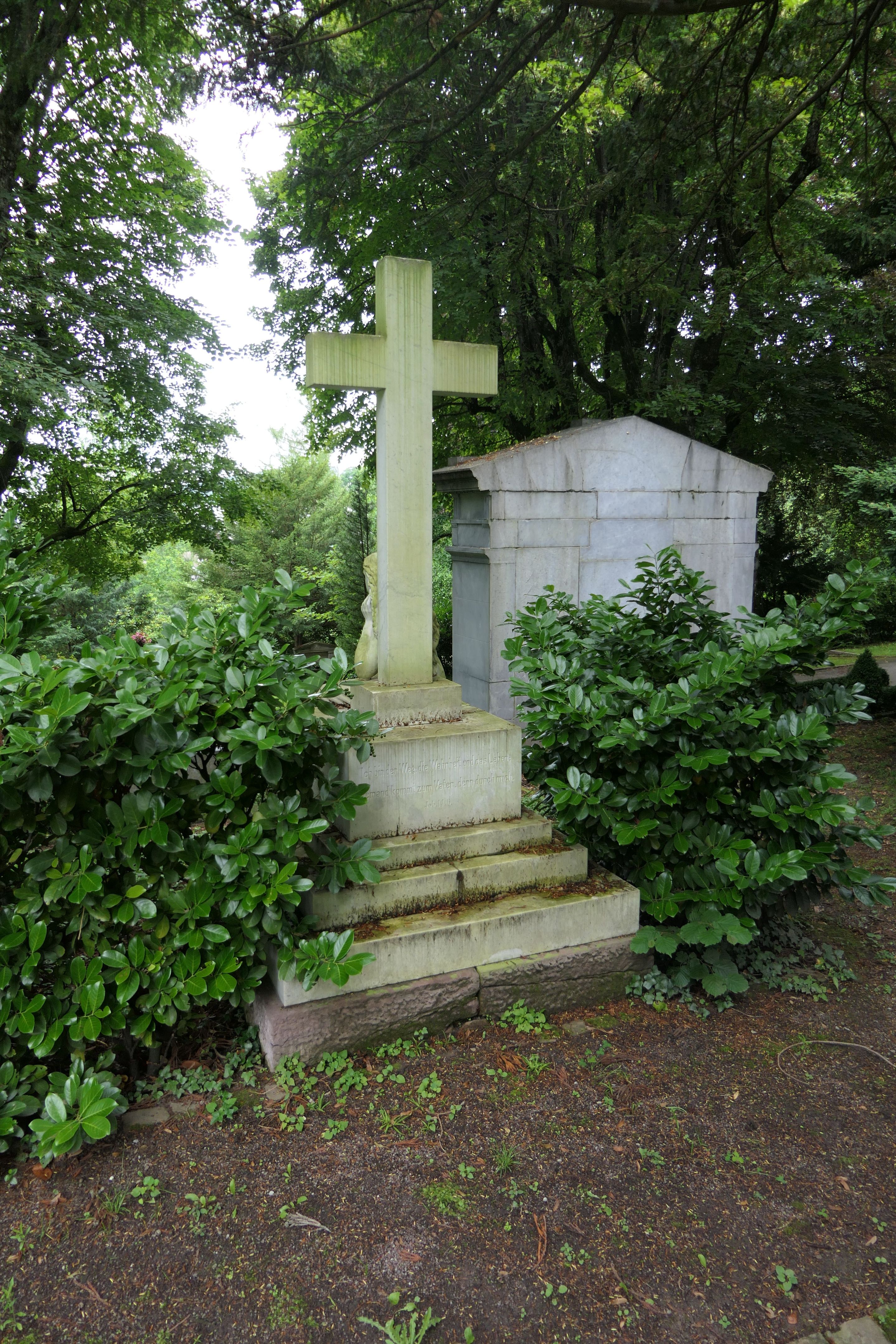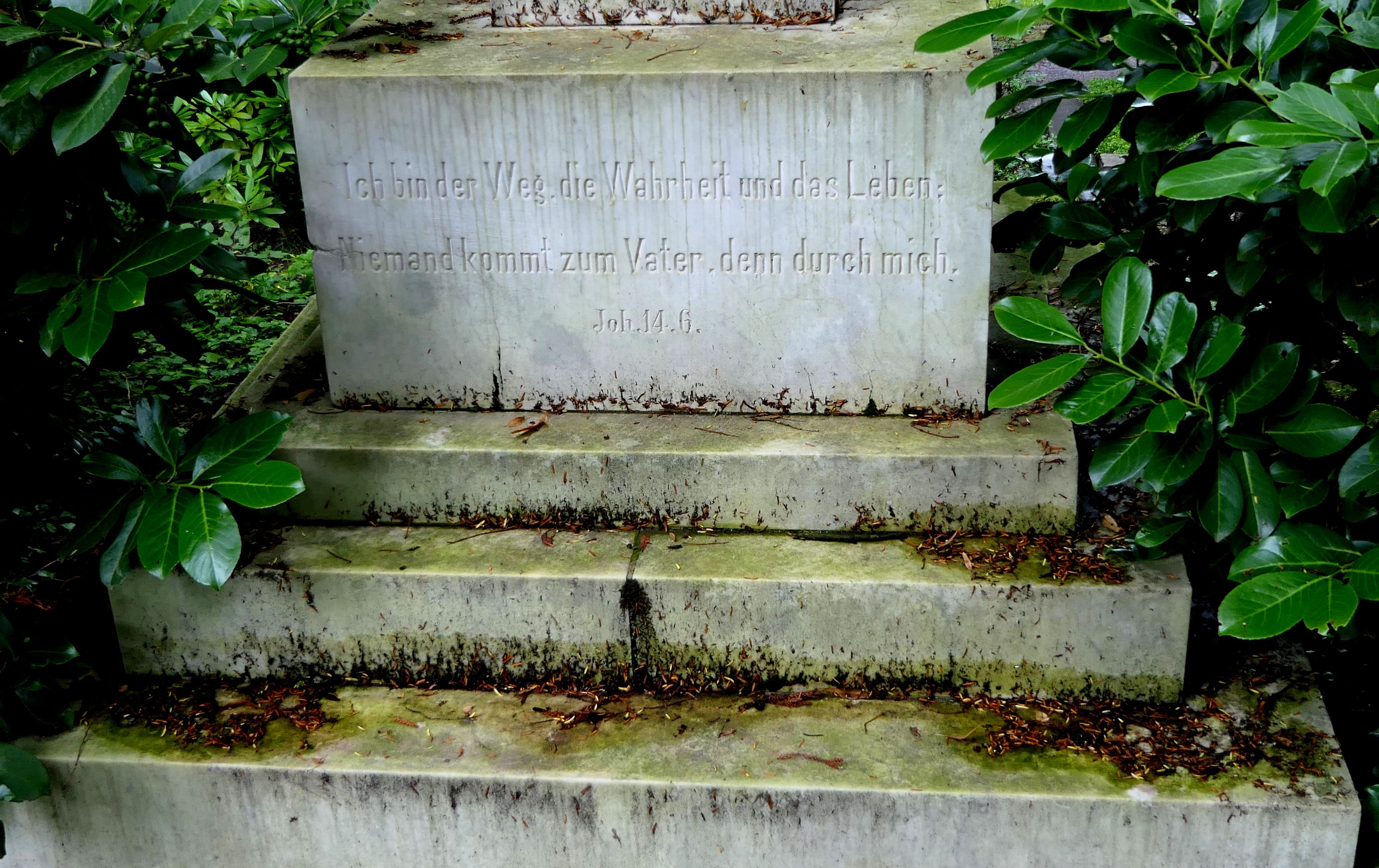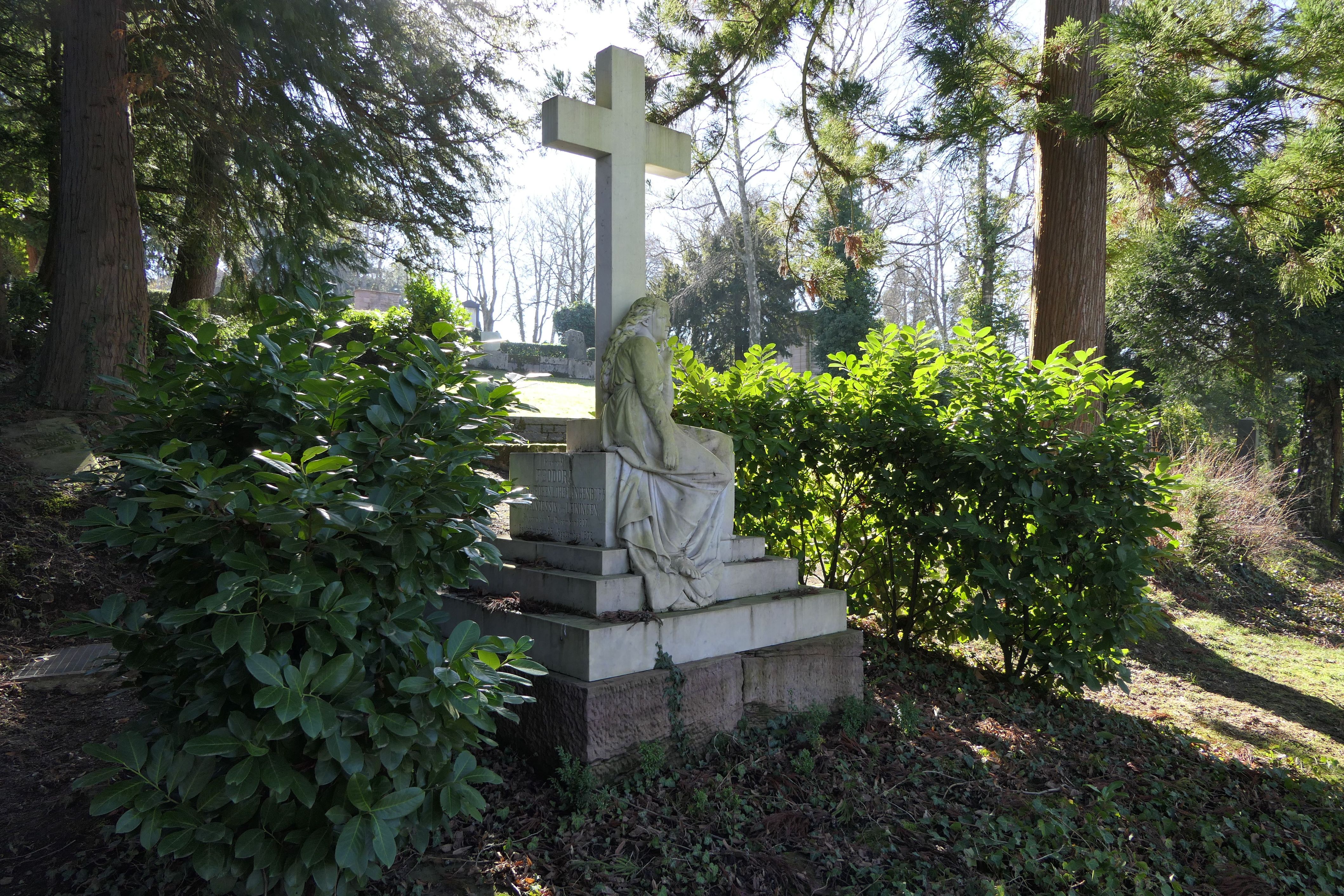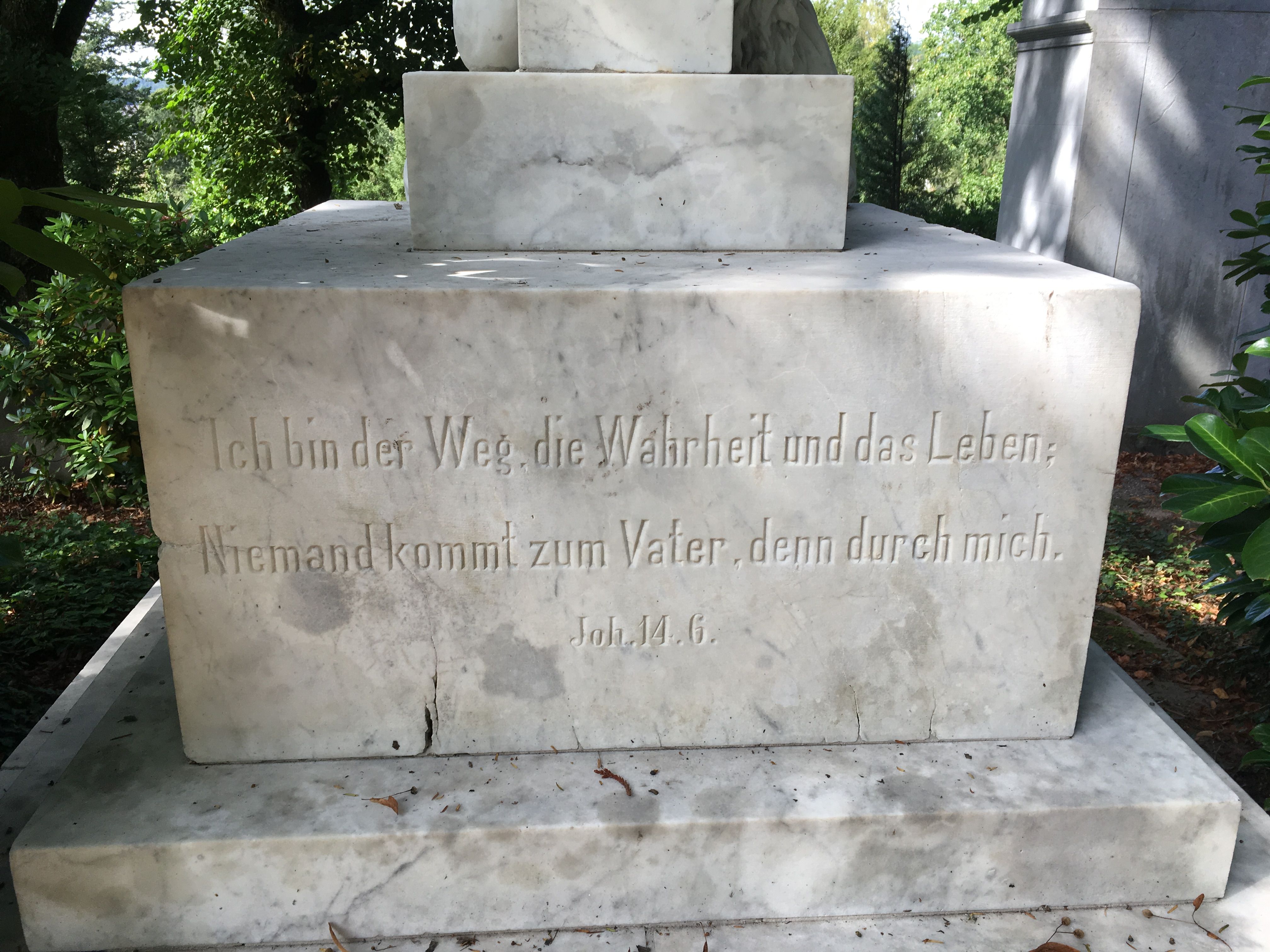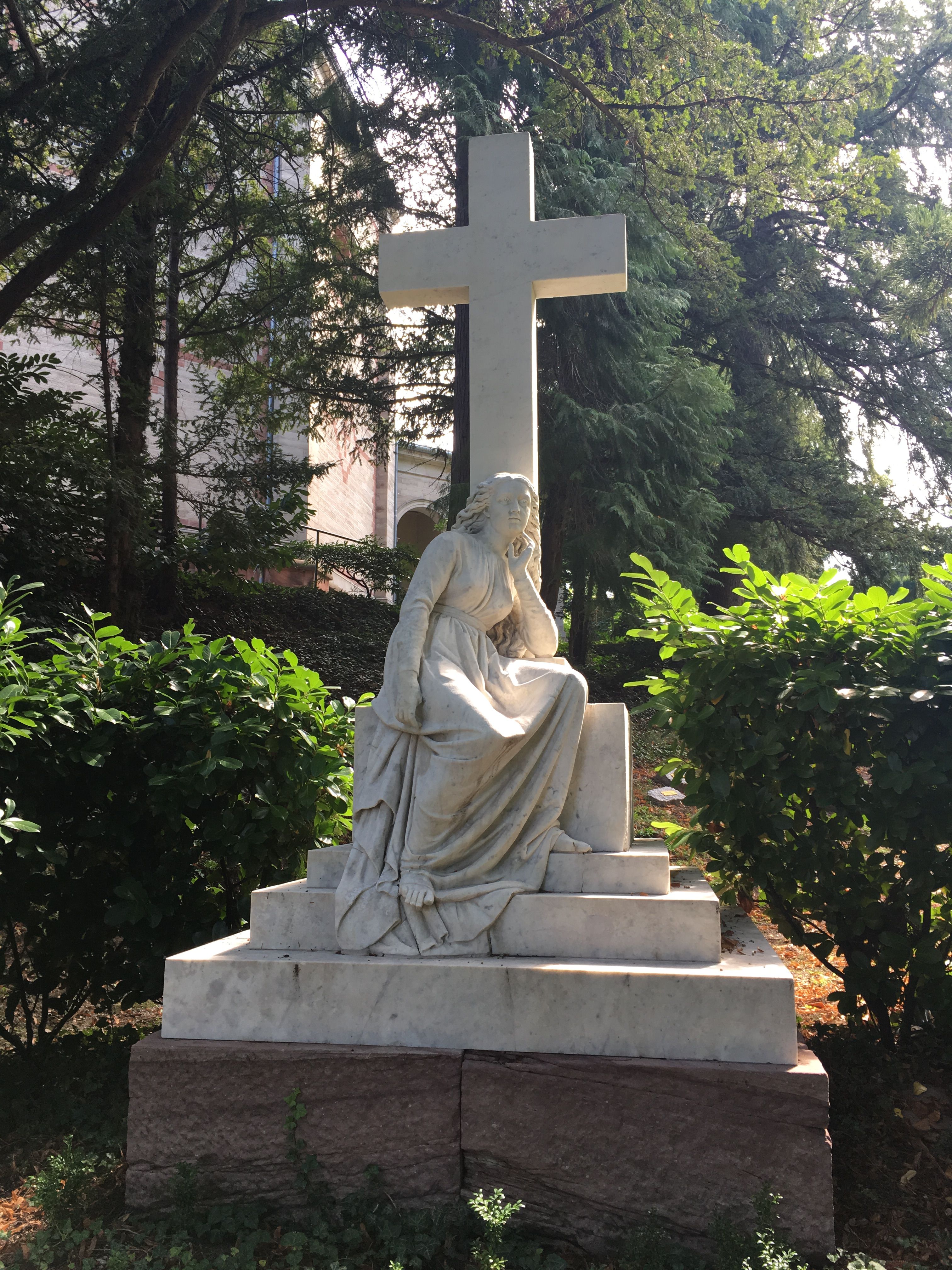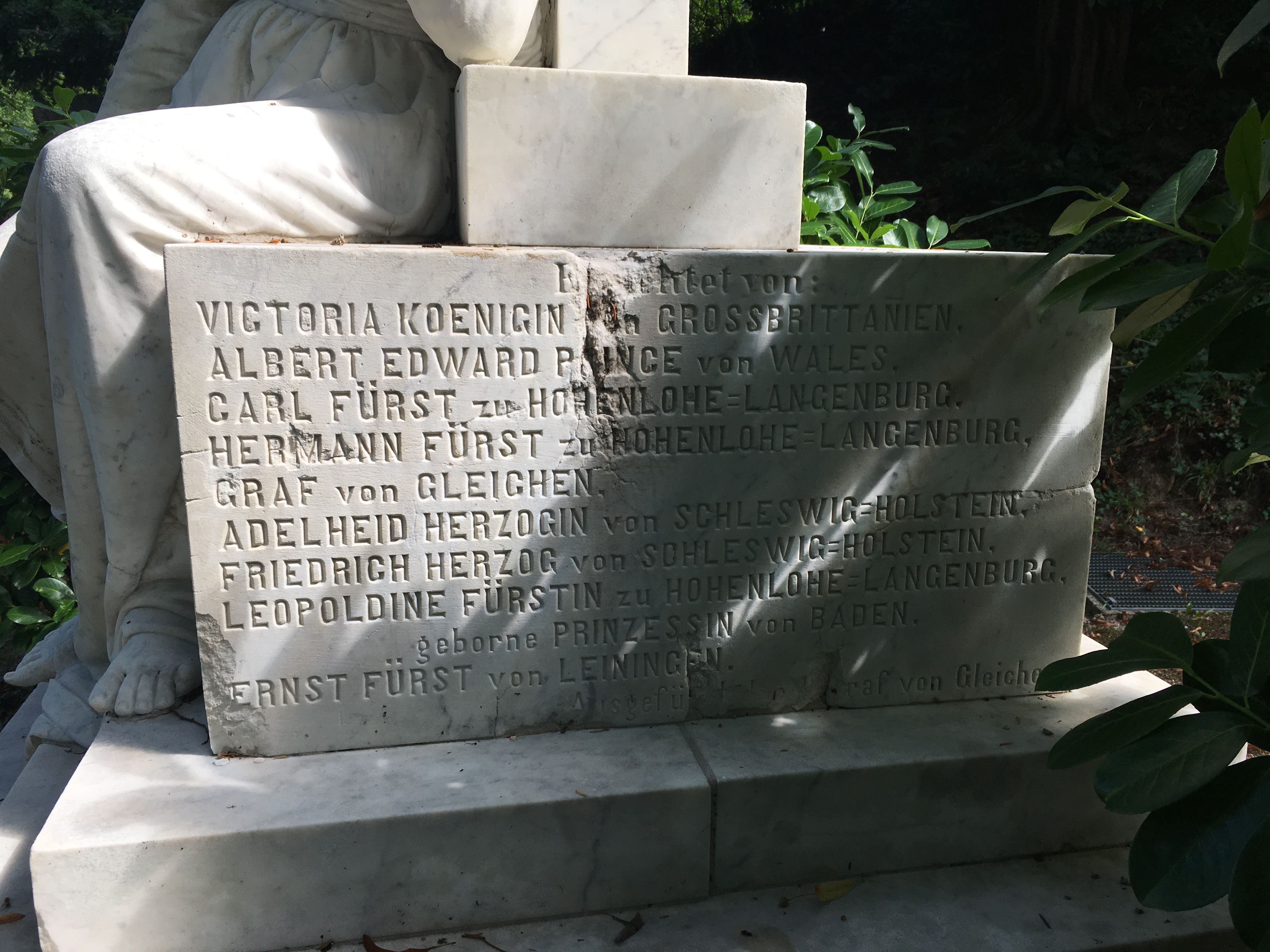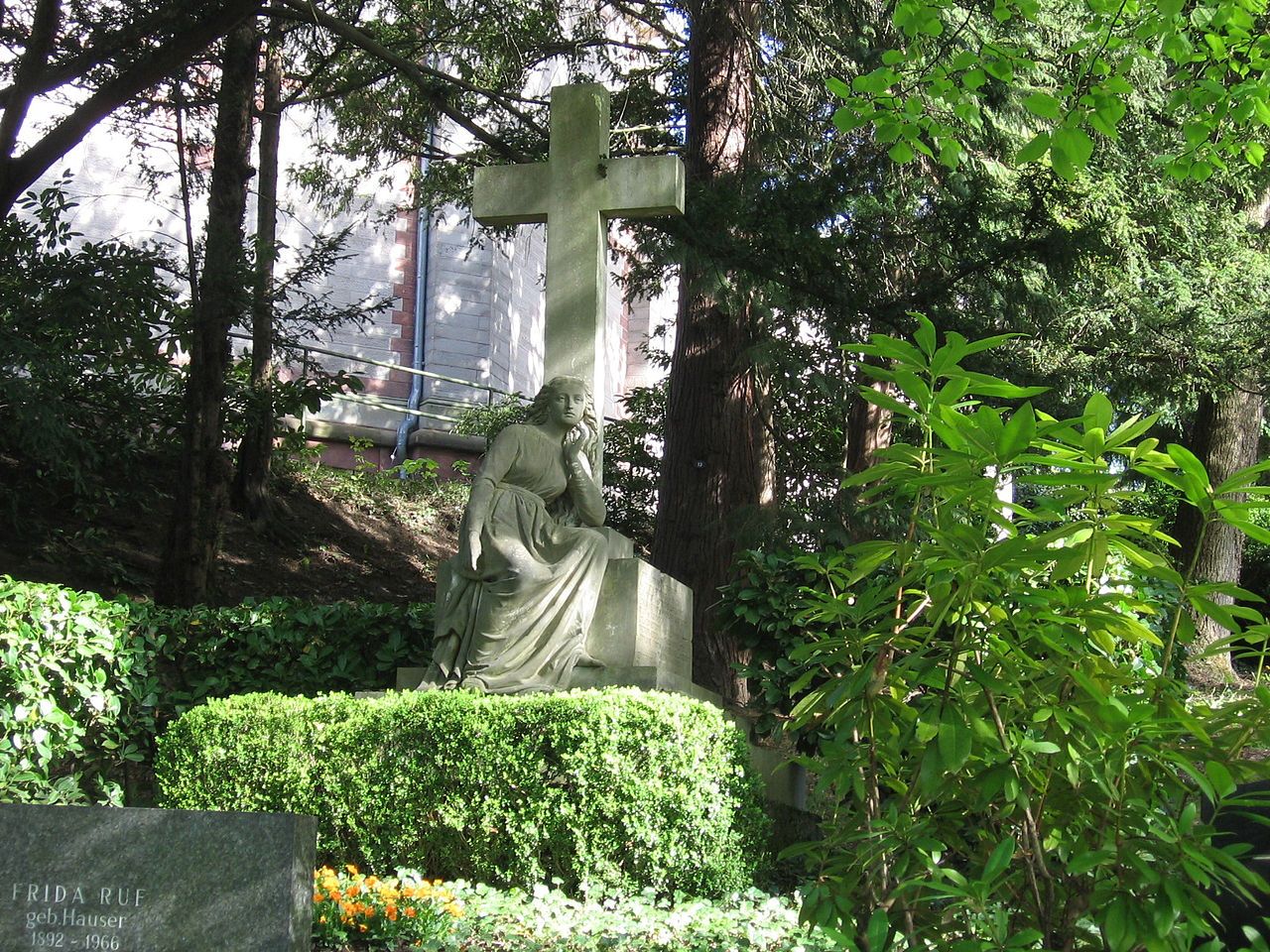Feodora was born in Amorbach in Bavaria, Germany on 7 December 1807 to Princess Victoria of Saxe-Coburg-Saalfeld and her husband, Emich Carl, Prince of Leiningen. Her father died in 1814.
On 29 May 1818, her mother remarried to Prince Edward Augustus, Duke of Kent and Strathearn, the fourth son of King George III of the United Kingdom. The following year, the household was moved to the United Kingdom since the duchess' pregnancy was coming to an end and so that the new potential heir to the British throne could be born on British soil.
By all accounts, Feodora enjoyed a very close relationship with her sister Victoria, who was devoted to her elder half-sister. Despite this, Feodora was eager to leave their residence at Kensington Palace permanently, as her "only happy time was driving out" with Victoria and her governess Baroness Louise Lehzen, when she could "speak and look as she liked".
Marriage
In early 1828, Feodora married Ernst I, Prince of Hohenlohe-Langenburg (1794–1860) at Kensington Palace. Prior to that, she had only met him twice. After their honeymoon, she returned to the German Confederation where she lived until her death in 1872. The prince had no domain, however, as the principality had been mediatised to Württemberg in 1806. The couple lived in the large and uncomfortable castle, Schloss Langenburg. Feodora maintained a lifelong correspondence with her sister and was granted an allowance of £300 whenever she could visit England.
Feodora's youngest daughter, the Duchess of Saxe-Meiningen, died in early 1872 of scarlet fever. Feodora died later that year.
Feodora and Ernest had six children (three sons and three daughters):
Carl Ludwig II, Prince of Hohenlohe-Langenburg 25 October 1829–16 May 1907) he succeed his father on 12 April 1860, but abdicated his rights on 21 April to marry unequally. He married Maria Grathwohl on 22 February 1861. They had three children.
Princess Elise of Hohenlohe-Langenburg (8 November 1830-27 February 1850) she died at the age of nineteen.
Hermann, Prince of Hohenlohe-Langenburg (31 August 1832–9 March 1913) he married Princess Leopoldine of Baden on 24 September 1862. They had three children.
Prince Victor of Hohenlohe-Langenburg (11 December 1833 – 31 December 1891) he married Lady Laura Seymour on 24 January 1861. They had four children.
Princess Adelheid of Hohenlohe-Langenburg (20 July 1835–25 January 1900) she married Frederick VIII, Duke of Schleswig-Holstein on 11 September 1856. They had five children.
Princess Feodora of Hohenlohe-Langenburg (7 July 1839–10 February 1872) she married George II, Duke of Saxe-Meiningen on 23 October 1858. They had three sons.
source: Wikipedia
Anna Hohenlohe-Langenburg (102792670)
Suggested edit: After Princess Feodora's husband had died in 1860, the Princess had bought a house in Baden-Baden (Kapuzinerstrasse 14) as her residence in 1863. She invited people to "musical salons" in her house, was also active as a patron of the Protestant church and even founded a kindergarten for children of working mothers. An increasing paralysis confined her more and more to a wheelchair in the early 1870s. Easter 1872, before her death, she was visited here for eleven days by her half-sister Queen Victoria. A year after Princess Feodora's death, Queen Victoria traveled to Baden-Baden to visit the grave in the main cemetery. The design for the female figure of the tomb leaning against a cross was made by the son of Princess Feodora, Victor Graf von Gleichen, and was erected only after Queen Victoria had seen it. When visiting the tomb of Princess Feodora, Queen Victoria stayed in the former house of Princess Feodora. Later the house was bought by Queen Victoria and the Queen stayed here several times during her visits to Baden-Baden. In 1889 it was sold again and after several changes of ownership it was unfortunately demolished in 1970.
Translated from German with the help of www.DeepL.com/Translator (free version)
Contributor: Claus Buschmann (50820712)
View Memorial∼Prinzessin Feodora zu Leiningen, vollständiger Name Prinzessin Anna Feodora Auguste Charlotte Wilhelmine zu Leiningen, durch Heirat Fürstin zu Hohenlohe-Langenburg, war die Halbschwester der britischen Königin Victoria sowie Nichte des ersten belgischen Königs Leopold I.
Feodora was born in Amorbach in Bavaria, Germany on 7 December 1807 to Princess Victoria of Saxe-Coburg-Saalfeld and her husband, Emich Carl, Prince of Leiningen. Her father died in 1814.
On 29 May 1818, her mother remarried to Prince Edward Augustus, Duke of Kent and Strathearn, the fourth son of King George III of the United Kingdom. The following year, the household was moved to the United Kingdom since the duchess' pregnancy was coming to an end and so that the new potential heir to the British throne could be born on British soil.
By all accounts, Feodora enjoyed a very close relationship with her sister Victoria, who was devoted to her elder half-sister. Despite this, Feodora was eager to leave their residence at Kensington Palace permanently, as her "only happy time was driving out" with Victoria and her governess Baroness Louise Lehzen, when she could "speak and look as she liked".
Marriage
In early 1828, Feodora married Ernst I, Prince of Hohenlohe-Langenburg (1794–1860) at Kensington Palace. Prior to that, she had only met him twice. After their honeymoon, she returned to the German Confederation where she lived until her death in 1872. The prince had no domain, however, as the principality had been mediatised to Württemberg in 1806. The couple lived in the large and uncomfortable castle, Schloss Langenburg. Feodora maintained a lifelong correspondence with her sister and was granted an allowance of £300 whenever she could visit England.
Feodora's youngest daughter, the Duchess of Saxe-Meiningen, died in early 1872 of scarlet fever. Feodora died later that year.
Feodora and Ernest had six children (three sons and three daughters):
Carl Ludwig II, Prince of Hohenlohe-Langenburg 25 October 1829–16 May 1907) he succeed his father on 12 April 1860, but abdicated his rights on 21 April to marry unequally. He married Maria Grathwohl on 22 February 1861. They had three children.
Princess Elise of Hohenlohe-Langenburg (8 November 1830-27 February 1850) she died at the age of nineteen.
Hermann, Prince of Hohenlohe-Langenburg (31 August 1832–9 March 1913) he married Princess Leopoldine of Baden on 24 September 1862. They had three children.
Prince Victor of Hohenlohe-Langenburg (11 December 1833 – 31 December 1891) he married Lady Laura Seymour on 24 January 1861. They had four children.
Princess Adelheid of Hohenlohe-Langenburg (20 July 1835–25 January 1900) she married Frederick VIII, Duke of Schleswig-Holstein on 11 September 1856. They had five children.
Princess Feodora of Hohenlohe-Langenburg (7 July 1839–10 February 1872) she married George II, Duke of Saxe-Meiningen on 23 October 1858. They had three sons.
source: Wikipedia
Anna Hohenlohe-Langenburg (102792670)
Suggested edit: After Princess Feodora's husband had died in 1860, the Princess had bought a house in Baden-Baden (Kapuzinerstrasse 14) as her residence in 1863. She invited people to "musical salons" in her house, was also active as a patron of the Protestant church and even founded a kindergarten for children of working mothers. An increasing paralysis confined her more and more to a wheelchair in the early 1870s. Easter 1872, before her death, she was visited here for eleven days by her half-sister Queen Victoria. A year after Princess Feodora's death, Queen Victoria traveled to Baden-Baden to visit the grave in the main cemetery. The design for the female figure of the tomb leaning against a cross was made by the son of Princess Feodora, Victor Graf von Gleichen, and was erected only after Queen Victoria had seen it. When visiting the tomb of Princess Feodora, Queen Victoria stayed in the former house of Princess Feodora. Later the house was bought by Queen Victoria and the Queen stayed here several times during her visits to Baden-Baden. In 1889 it was sold again and after several changes of ownership it was unfortunately demolished in 1970.
Translated from German with the help of www.DeepL.com/Translator (free version)
Contributor: Claus Buschmann (50820712)
View Memorial∼Prinzessin Feodora zu Leiningen, vollständiger Name Prinzessin Anna Feodora Auguste Charlotte Wilhelmine zu Leiningen, durch Heirat Fürstin zu Hohenlohe-Langenburg, war die Halbschwester der britischen Königin Victoria sowie Nichte des ersten belgischen Königs Leopold I.
Gravesite Details
Sehr gut erhalten in der direkten Nachbarschaft zur Friedhofskapelle
Family Members
Advertisement
See more Hohenlohe-Langenburg or Leiningen memorials in:
- Hauptfriedhof Baden-Baden Hohenlohe-Langenburg or Leiningen
- Baden-Baden Hohenlohe-Langenburg or Leiningen
- Stadtkreis Baden-Baden Hohenlohe-Langenburg or Leiningen
- Baden-Württemberg Hohenlohe-Langenburg or Leiningen
- Germany Hohenlohe-Langenburg or Leiningen
- Find a Grave Hohenlohe-Langenburg or Leiningen
Records on Ancestry
Sponsored by Ancestry
Advertisement
